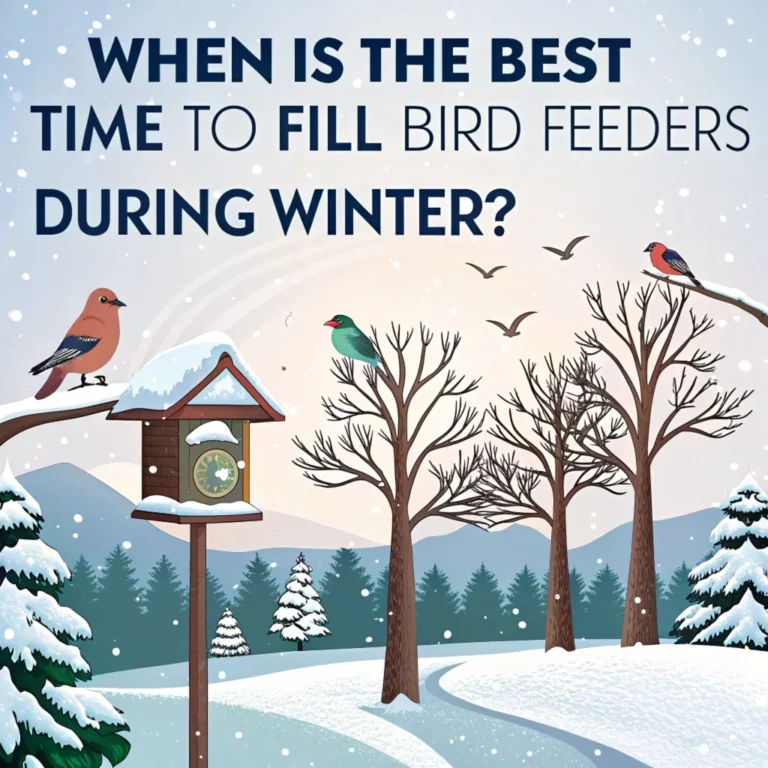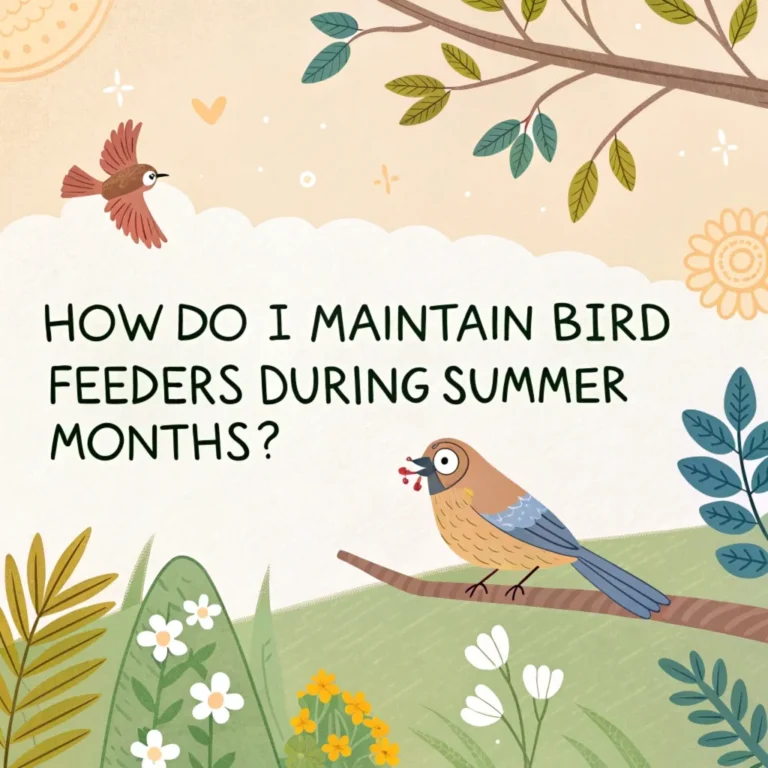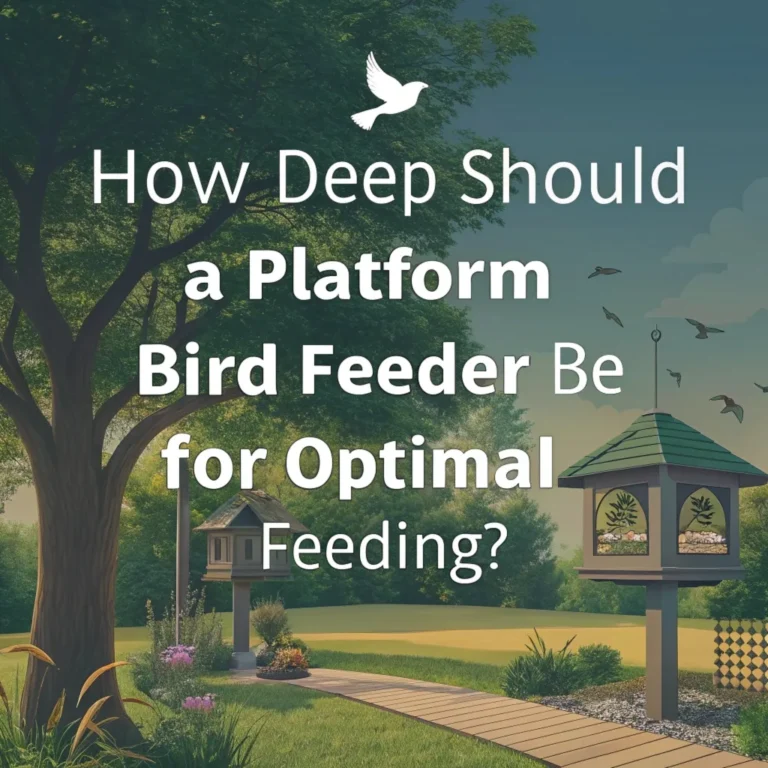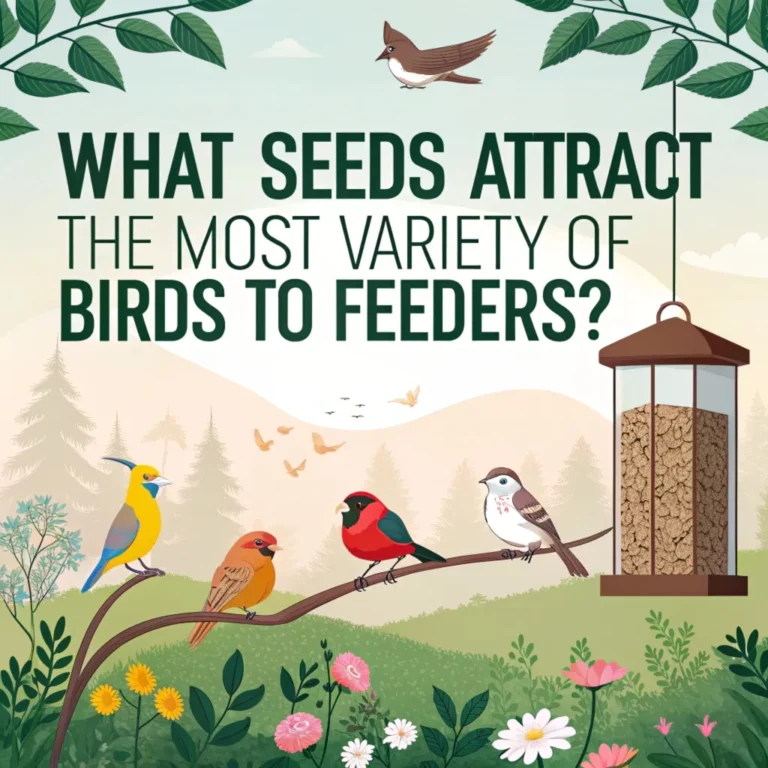Which Bird Feeder Design is Best for Small Garden Spaces?
Creating a bird-friendly environment in a small garden space presents unique challenges.
However, with the right bird feeder design, you can attract a variety of feathered friends to your compact outdoor area.
This post explores the most effective bird feeder options for small gardens, balconies, or patios, helping you choose the perfect solution to bring nature closer to home.

Key Takeaways
- Window feeders offer close-up views and save space
- Tube feeders are versatile and protect seeds from weather
- Nyjer feeders attract small finches and conserve space
- Caged feeders keep larger birds and squirrels away
- Suet feeders provide high-energy food in a compact design
- Proper placement and maintenance are crucial for success
- Variety in feeder types can attract diverse bird species
- Small bird-specific feeders ensure smaller species can access food
- Regular cleaning prevents disease spread among birds
- Consideration of local bird species helps in feeder selection
Attracting birds to small spaces requires thoughtful planning and the right equipment. By selecting appropriate feeders and providing a variety of food options, you can create a thriving avian oasis even in the most compact urban environments.
Remember that consistency and patience are key when establishing a new feeding station, as it may take time for birds to discover and trust your offerings.
Small garden spaces can become vibrant hubs of bird activity with the right approach. Focus on creating a diverse and welcoming environment that caters to the needs of various bird species, and you’ll soon find your compact outdoor area transformed into a bustling bird sanctuary.
Window Feeders: A Space-Saving Solution
Window feeders are an excellent choice for small garden spaces. These compact feeders attach directly to your window, offering several advantages:
- Close-up views of feeding birds
- No need for additional outdoor space
- Easy to refill and clean
- Protect birds from window collisions
Window feeders typically use suction cups to adhere to the glass, making them easy to install and remove. They attract small birds like finches, chickadees, and titmice, providing an intimate birdwatching experience.
Window feeders offer a unique opportunity to observe birds up close without disturbing their natural behavior. This proximity allows for detailed observation of feeding habits, plumage, and interactions between different species.
By placing a window feeder, you create a personal connection with local wildlife while maximizing limited space.
Maintenance of window feeders is crucial for the health of visiting birds. Regular cleaning and refilling ensure a safe and hygienic feeding environment, encouraging repeat visits from your feathered friends.
Tube Feeders: Versatile and Efficient

Tube feeders are a popular option for small gardens due to their versatility and efficiency. These feeders offer several benefits:
- Compact design suitable for hanging from hooks or branches
- Protection of seeds from rain and snow
- Multiple feeding ports to accommodate several birds
- Ability to target specific bird species with different seed types
Tube feeders work well with various seeds, including sunflower seeds, mixed seeds, and nyjer seeds. They attract a wide range of birds, from finches to chickadees and nuthatches.
Tube feeders are ideal for small spaces because they can be easily hung from various structures, including balcony railings, shepherd’s hooks, or tree branches.
Their vertical design allows for efficient use of space while providing multiple feeding ports for birds to access simultaneously.
Selecting the right tube feeder depends on the types of birds you want to attract and the available space. Consider factors such as the number of feeding ports, seed capacity, and materials used in construction to ensure durability and longevity.
Nyjer Feeders: Attracting Finches in Small Spaces
Nyjer feeders are specialized tube feeders designed for tiny nyjer seeds, which are favored by finches. These feeders are ideal for small gardens because:
- They have a slim profile
- They attract specific small bird species
- They prevent seed waste due to their small openings
Goldfinches, siskins, and other small finches are drawn to nyjer feeders, adding a splash of color to your compact outdoor space.
Nyjer feeders are particularly effective in attracting colorful finches to small gardens. The tiny seeds and specialized feeder design cater specifically to these small birds, making them an excellent choice for those looking to add vibrant avian visitors to their limited outdoor areas.
Placement of nyjer feeders is crucial for success. Position them near natural perches or in areas with some cover to make finches feel secure while feeding.
Caged Feeders: Protecting Food for Smaller Birds
Caged feeders are an excellent solution for small gardens where larger birds or squirrels might dominate regular feeders. These feeders offer several advantages:
- Exclusion of larger birds and squirrels
- Protection for smaller birds while feeding
- Reduced seed spillage and waste
Caged feeders allow small birds like chickadees, nuthatches, and finches to access food while keeping larger species at bay.
Caged feeders provide a safe haven for smaller birds in environments where competition for food can be fierce.
By limiting access to only small species, these feeders ensure that more delicate birds have a reliable food source without interference from larger, more aggressive birds or squirrels.
Selecting the right caged feeder involves considering the size of the cage openings and the types of seeds you plan to offer. Ensure that the openings are large enough for your target species but small enough to exclude unwanted visitors.
Suet Feeders: High-Energy Food in a Compact Design

Suet feeders provide a high-energy food source for birds in a compact package, making them ideal for small garden spaces. Benefits include:
- Attraction of a variety of bird species, including woodpeckers
- Year-round feeding option, especially valuable in winter
- Compact design that can be hung or mounted
Suet feeders come in various styles, from simple cages to more decorative options, allowing you to choose one that fits your space and aesthetic preferences.
Suet feeders are particularly valuable in small gardens during colder months when birds require additional energy to maintain body heat.
These compact feeders can attract a diverse range of species, including those that might not visit seed feeders, adding variety to your bird-watching experience.
When using suet feeders, consider offering different types of suet cakes to attract a wider range of birds. Some suet blends include seeds, fruits, or insects, catering to various dietary preferences among bird species.
Placement and Maintenance Tips
To maximize the effectiveness of your bird feeders in a small garden space:
- Place feeders near natural shelter like shrubs or trees
- Ensure feeders are visible from inside your home for enjoyment
- Keep feeders clean and regularly maintained to prevent disease spread
- Provide a water source nearby to attract more birds
- Consider using multiple feeder types to attract a variety of species
Strategic placement of feeders is crucial in small spaces to create a safe and attractive environment for birds.
By positioning feeders near natural cover, you provide birds with quick escape routes and resting places, making them feel more secure while feeding. This approach can significantly increase the number and variety of birds visiting your garden.
Regular maintenance is essential for the health of visiting birds and the longevity of your feeders. Establish a cleaning routine to prevent the spread of diseases and ensure that your feeders remain in good condition throughout the year.
FAQs
What is the best bird feeder for a small balcony?
Window feeders or small tube feeders are ideal for balconies, as they take up minimal space and can be easily attached or hung.
How can I attract a variety of birds to my small garden?
Offer different types of food in various feeder styles. Use a mix of seeds, suet, and nyjer to attract diverse species.
How often should I clean my bird feeders?
Clean your feeders at least once every two weeks, or more frequently during wet weather or if you notice sick birds.
Can I use bird feeders year-round in a small space?
Yes, providing food year-round can help birds in all seasons. Adjust the types of food offered based on seasonal needs.
How do I keep squirrels away from my bird feeders in a small garden?
Use caged feeders or feeders with squirrel-proof mechanisms. Placing feeders away from jumping points can also help deter squirrels.
By choosing the right bird feeder designs and following proper placement and maintenance practices, you can create a thriving bird habitat in even the smallest garden space. This not only enhances your outdoor area but also provides crucial support for local bird populations.

Luna is the passionate founder and author of Birds and You, a website dedicated to sharing her love for birds with fellow enthusiasts. Through her engaging articles and guides, she aims to educate and inspire others to explore the fascinating world of birds. When she’s not writing, you can find Luna observing birds in their natural habitats or sharing beautiful bird photography on Pinterest. Join her on this journey to celebrate and protect our feathered friends!







